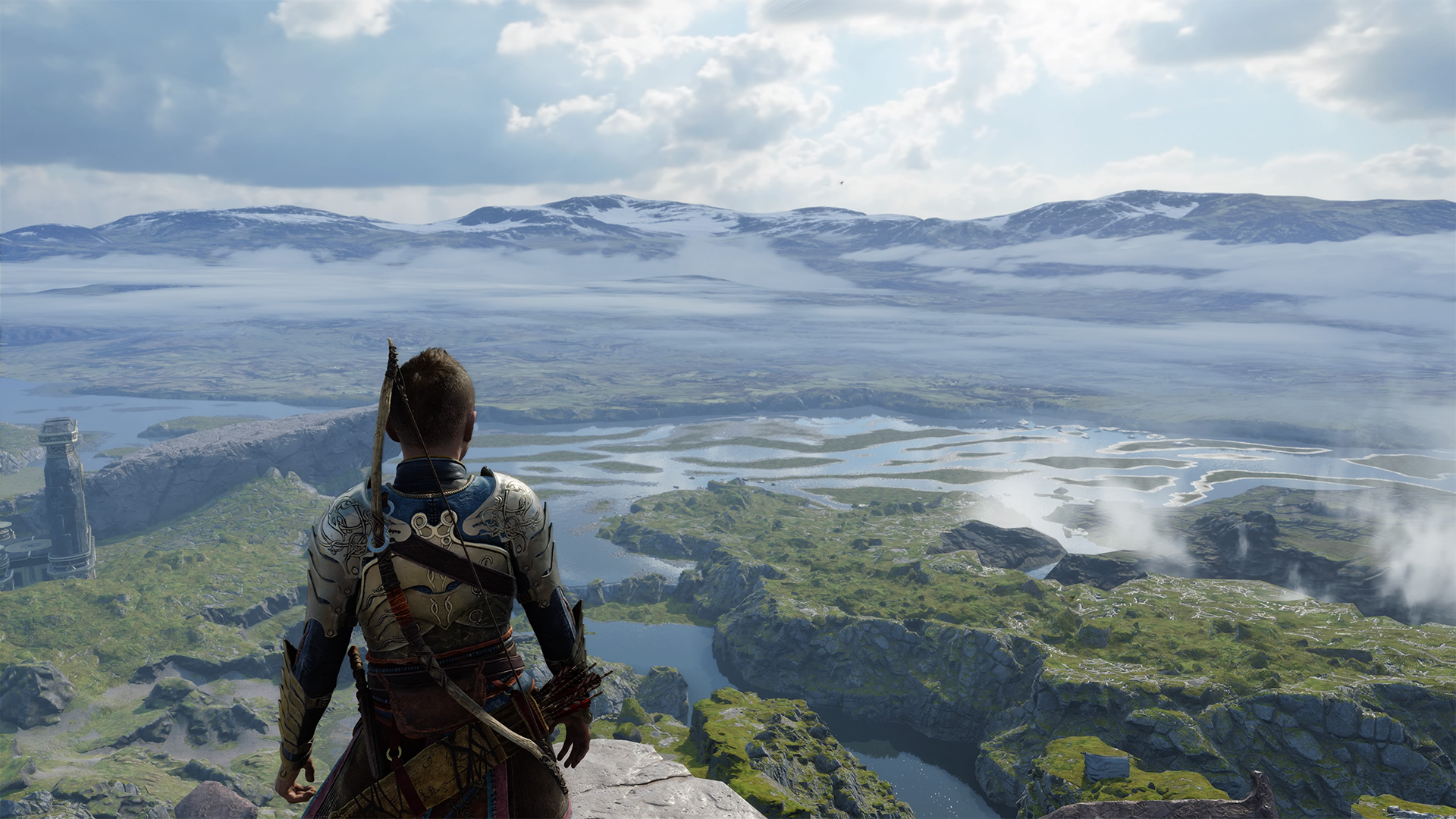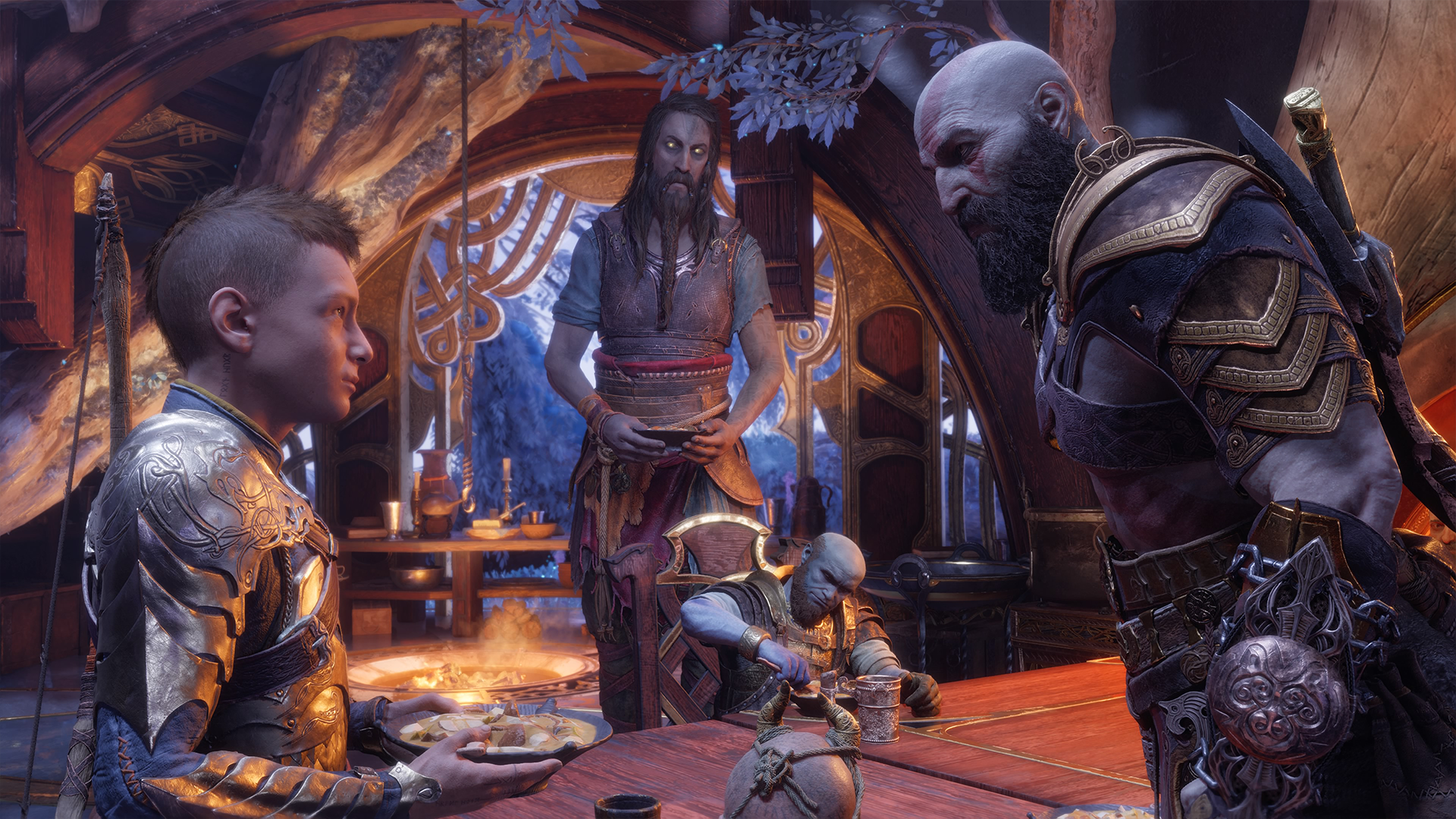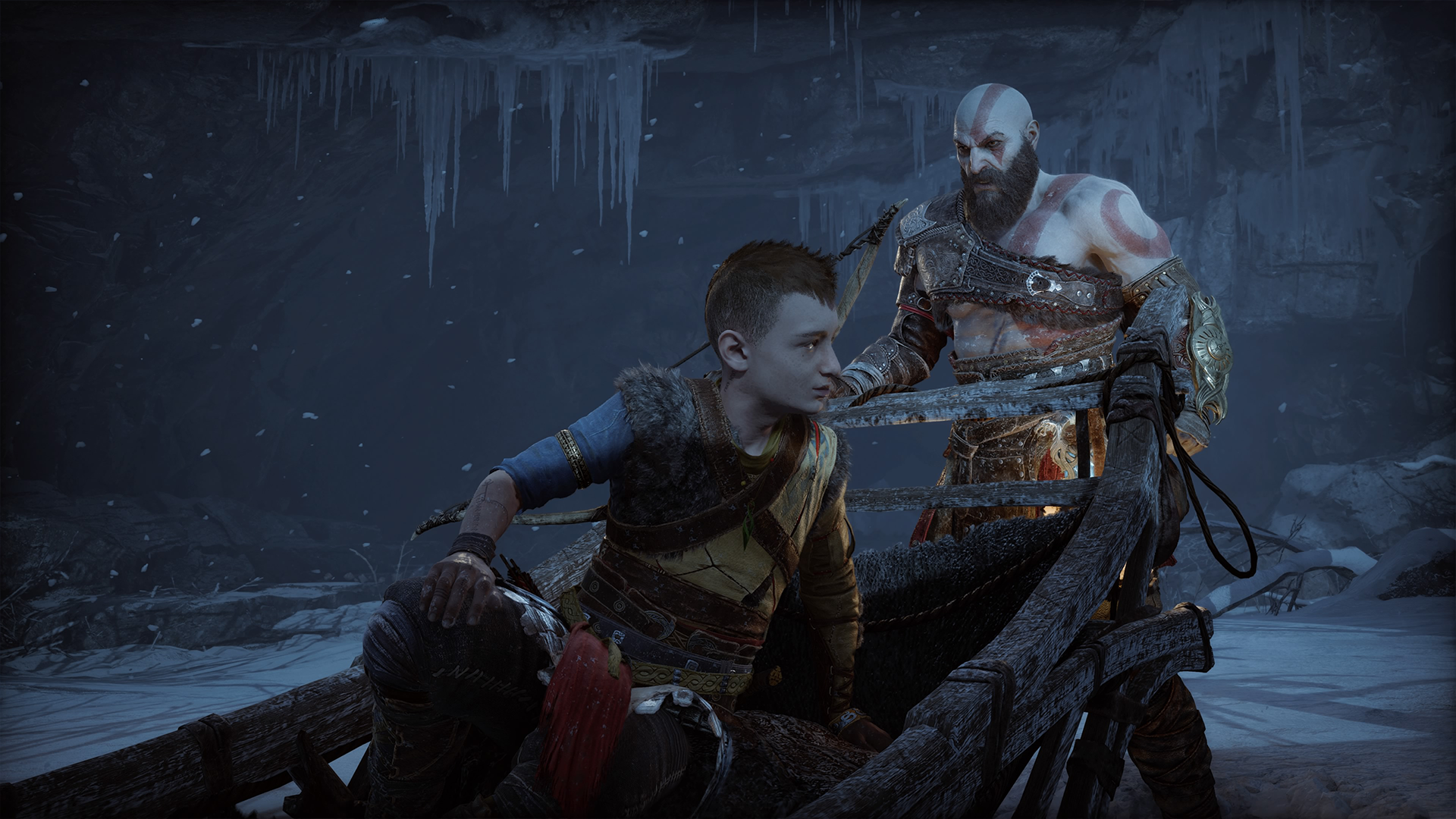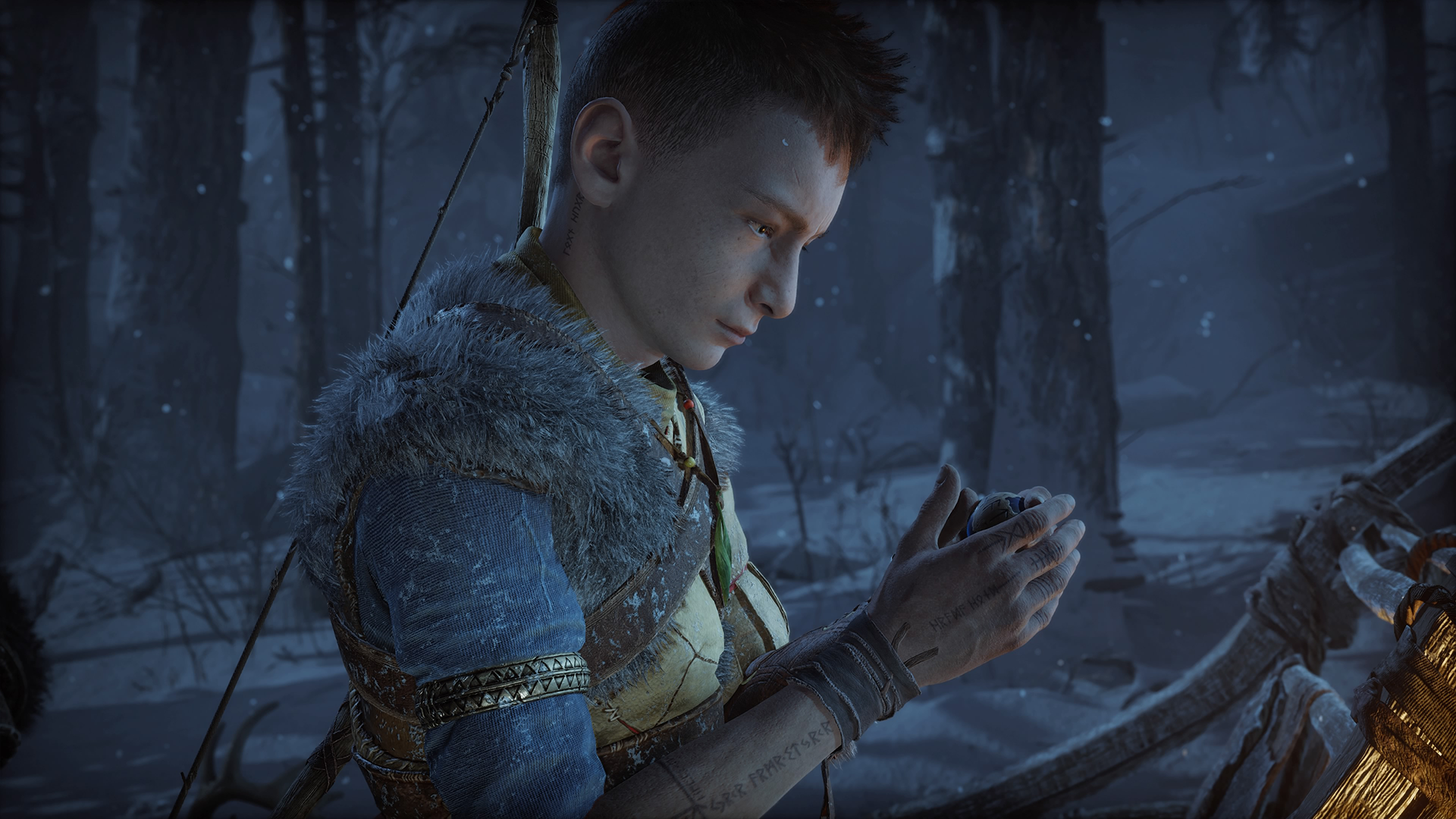God of War: Ragnarok is like a 1990s David Copperfield made-for-TV magic special. It’s exciting, tells an interesting story, has unbelievable production value, and is a satisfying experience all the way through. But like a stage magic show, if the artist spends too much time on the razzle-dazzle and not enough on the payoff, eyes start to wander. The illusion breaks as the strings holding everything together become all too clear.
Ragnarok is an outstanding game. It’s masterfully produced, with a satisfying story and excellent gameplay. It’s also proof positive that editors matter and that more art isn’t necessarily better art.
Ragnarok picks up with a slightly older Atreus and Kratos, using the framework of God of War 2018 as a springboard to craft a grander tale. Their prior conflicts with the Aesir, the gods of the Norse religion, have caught up with them, and they find themselves at odds with Thor, Odin, and the rest. Old friends and foes make an appearance, and the stakes are raised to include the fate of all the realms.
It’s the sort of next step one would expect from a high-budget sequel. Moving the narrative forward is important, but just as significant is the way the game understands and advances the themes of its predecessor. God of War 2018 focuses on Kratos learning to be a father to Atreus. Ragnarok explores the next inevitable stage of parental relationships: letting go.
Atreus developing into a young adult — making and trusting his own choices, even as he makes mistakes — is an inevitable part of growing up. Ragnarok gives him more dedicated screen time to great effect, and it’s easy to take pride in his successes while empathizing with his losses. Simultaneously, Kratos contends with a child that no longer needs him and, in many ways, needs room to grow. It’s painful, nerve-wracking at times, and so damn human. It’s a triumph of writing and character development.
Much of what makes that work is the game’s outstanding production quality. God of War: Ragnarok clearly had a massive budget. It looks fantastic on PS5 and PlayStation 4, with a scope and scale that few games can approach, much less reach. The sound design is excellent, with smart use of echo and reverb to add more immersive qualities to the varied and diverse locals.
Christopher Judge and Sunny Suljic, Kratos and Atreus, respectively, take full advantage of the visual detail and audio fidelity, delivering two of the best acting performances of the generation. Judge, in particular, infuses so much weight, thought, and emotion into a character of few words, masterfully manipulating pauses and subtleties in timbre in lieu of long monologues.
But the broader story involving the end of the world, the eponymous Ragnarok, is where things unravel a bit. There are fun characters throughout the journey and a few twists and turns that add some surprises, but the overarching plot is just fine if a bit bland. At worst, it’s bloated. There’s nothing wrong with long adventures, as long as the time is used for something. Filler can be a positive, giving characters room to breathe, reinforcing their personalities, and adding to the overall world around them. But God of War: Ragnarok treads and retreads ad-nauseam.
There’s an interesting sequence where Atreus and Kratos are separated, and Atreus travels through a beautiful, varied location with another character. There are important bits of story information here, but the section is hours too long, with repeated slow slogs escorting an ox and side plots at best tangentially related to the core story. This happens time and again. New barriers for the characters are introduced and then disappear with no lasting influence on the story. Entire chapters could have been eliminated for a tighter, more cohesive experience.
The levels themselves are a lot like the story. Many are excellent but carry an unfortunate tendency to do more for the sake of more. Six of the nine realms are revisited from God of War 2018, but they’re drastically changed by Fimbulwinter, the great prelude to the end of the world.
The realms are diverse, with distinct biomes, enemies, and themes. Volcanic Muspelheim stands in stark contrast to the frigid Lake of Nine. Visiting each for the first time is interesting, as they all present their own unique gameplay wrinkles. Alfheim, for example, is filled with physics puzzles that manipulate bridges and doors, while the lush forests and deltas of Vanaheim are rife with noxious, poisonous plants that must be handled with care.
The novelty of each area begins to wane, however, when you spend hours revisiting the same corridors and pathways; you can expect to return to realms frequently, even if you are focused on just the main story missions. To make sense of all this backtracking, God of War: Ragnarok employs the classic Metroid formula: gaining access to sub-areas by way of items gained later in the game. But God of War: Ragnarok isn’t Metroid.
As a sci-fi series in which you play a human in a space suit, Metroid‘s cordoned-off areas make sense and provide reasonable challenges that logically require more extensive solutions than what may be initially at-hand. In Ragnarok, where you’re a literal god that can rip pillars out of the earth and swing them like baseball bats, too often progression and puzzles are blocked because Kratos can’t be bothered to step over knee-high pointy rocks or push over some lumber lying across an opening.
Further, most of the equipment that opens these additional pathways is inessential or unremarkable outside of performing that specific task. Link acquiring the hookshot in a Zelda game feels game-changing. Atreus getting a new arrow type just in time to take a blocked path when the story needs requires it feels contrived and inorganic.
The action in God of War: Ragnarok is stellar. It’s largely unchanged from God of War 2018, and that’s a good thing. Kratos swings his Leviathan Axe with heft, and the responsive controls do an excellent job catering to different playstyles. Want to be a tank behind your shield and pull enemies close with your Blades of Chaos? Done. Rather be more nimble, parrying and rolling while setting up special runic attacks? Just as doable. The number of possibilities is a testament to great design that doesn’t grow stale, even after 40 hours.
There’s more variety in weapons, armors, and mods that can be applied to your armaments, too. Your approach to battle repeatedly changes throughout the game, and crafting different builds becomes extremely viable. I found myself in love with a setup designed to quickly build stagger, allowing me to use powerful grapple attacks frequently. I combined that with armor that boosted my strength while regenerating my health and rage after each grapple. It’s a perfect example of complementary loadout crafting and a very satisfying system to tap into.
While the gameplay is overall excellent, it can also feel dated. The fact we’re still performing quick time events in 2022 is surprising enough, but the prevalence of invisible barriers is an outmoded relic of level design. Whether it’s a story-driven scene where you move within a confined, invisible box or you’re moving around levels hemmed by walls you can’t see, God of War: Ragnarok feels like an excellent game held back by elements stuck in the past. It’s disappointing, especially when its contemporaries are generation-defining action RPGs and have largely moved well past this.
God of War: Ragnarok Review — The Bottom Line
Pros
- Deeply moving character development.
- Amazing acting performances.
- Detailed and varied levels.
- Exquisite combat that builds on the previous game.
Cons
- Bloated story, with frequent backtracking.
- Tired use of dated gameplay gimmicks.
God of War: Ragnarok is the very definition of a great game. Its scope is grand, with a polished presentation that looks and sounds spectacular. While the overarching plot is mediocre, the characters, anchored by some of the best acting performances of the generation, stand out for their depth, development, and empathy. The action is exquisite, further honing a winning combat formula while adding some refreshing variety.
Still, there are some noticeable issues that separate a great game from something transcendent. Too much time is spent meandering aimlessly or retreading the same ground. Tired gameplay mechanics, like quick time events, feel out of place, and reliance on outdated systems like invisible barriers to corral players is regressive.
None of that changes one simple fact: God of War: Ragnarok is excellent and well worth playing. It’s a satisfying conclusion to the modern God of War saga, but it’s hard to walk away and not feel like this could have been something greater.
[Note: Sony provided the copy of God of War: Ragnarok used for this review.]










Published: Nov 25, 2022 03:50 am